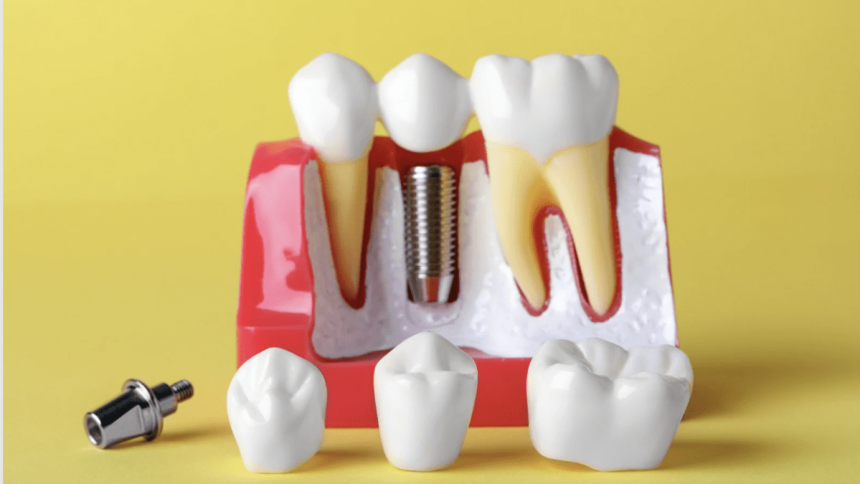When faced with damaged or missing teeth, patients often find themselves weighing two primary restorative options: dental crowns and dental implants. Both treatments serve distinct purposes in modern dentistry, yet the decision between them can significantly impact oral health, functionality, and long-term outcomes. Understanding the fundamental differences, applications, and considerations for each option is crucial for making an informed decision about your dental care.
Understanding Dental Crowns
Dental crowns represent one of the most versatile and widely used restorative treatments in dentistry. A crown is essentially a tooth-shaped cap that covers and protects a damaged natural tooth, restoring its shape, size, strength, and appearance. The procedure involves reshaping the existing tooth structure to accommodate the crown, which is then cemented permanently in place.
Crowns serve multiple purposes beyond simple restoration. They protect weakened teeth from fracturing, restore teeth that have undergone root canal treatment, cover severely discolored or misshapen teeth, and provide structural support for dental bridges. The materials used for crowns have evolved significantly, with options including porcelain, ceramic, metal alloys, and porcelain-fused-to-metal combinations, each offering distinct advantages in terms of durability, aesthetics, and biocompatibility.
The success rate for dental crowns is remarkably high, with studies indicating that properly maintained crowns can last 15 to 30 years or even longer. However, their longevity depends heavily on factors such as oral hygiene, bite forces, and the underlying health of the supporting tooth structure.
Understanding Dental Implants
Dental implants represent a more comprehensive solution for missing teeth, involving the surgical placement of a titanium post into the jawbone to replace the root of a missing tooth. This titanium post serves as an artificial root that integrates with the bone through a process called osseointegration, creating a stable foundation for a replacement tooth crown.
The implant process typically occurs in multiple stages over several months. Initially, the titanium post is surgically placed into the jawbone, followed by a healing period of three to six months during which osseointegration occurs. Once integration is complete, an abutment is attached to connect the implant to the final restoration, which is typically a crown that matches the appearance of natural teeth.
According to Montvale Prosthodontics (www.montprosth.com), dental implants offer the most anatomically correct solution for tooth replacement, as they stimulate the jawbone and prevent the bone loss that typically occurs after tooth extraction. This stimulation helps maintain facial structure and prevents the sunken appearance that can develop when multiple teeth are missing.
Statistical data demonstrates the exceptional success rate of dental implants, with studies showing success rates of 95-98% over ten years when properly planned and maintained. This impressive track record has made implants the gold standard for single tooth replacement in modern dentistry.
Key Differences in Application
The primary distinction between crowns and implants lies in their fundamental application. Crowns are designed to restore and preserve existing tooth structure, making them ideal when the natural tooth root remains healthy and viable. They require sufficient tooth structure to provide adequate support and retention for the crown.
Implants, conversely, are specifically designed for situations where the entire tooth, including the root, is missing or requires extraction. They provide a complete tooth replacement solution that doesn’t depend on adjacent teeth for support, unlike traditional bridges that require crowns on neighboring teeth.
The treatment timeline also differs significantly between these options. Crown placement typically requires two to three appointments over a few weeks, while implant treatment extends over several months due to the necessary healing and integration periods.
Cost Considerations and Long-term Value
Initial costs represent an important factor in treatment selection, though long-term value should be the primary consideration. Dental crowns generally require a lower upfront investment compared to implants, making them attractive for patients with immediate budget constraints.
However, implants often provide superior long-term value when considering their longevity and the fact that they don’t require replacement of adjacent healthy tooth structure. Studies indicate that while implants may cost more initially, their exceptional durability and the prevention of future complications often make them more cost-effective over time.
Insurance coverage varies significantly for both treatments, with many plans providing partial coverage for crowns as a restorative necessity, while implant coverage remains limited, though this is gradually improving as the benefits become more widely recognized.
Maintenance and Longevity
Both crowns and implants require diligent oral hygiene for optimal longevity, but their maintenance requirements differ somewhat. Crowns require careful attention to prevent decay at the margins where the crown meets the natural tooth structure. Regular dental checkups, proper brushing and flossing, and avoiding excessive force from grinding or clenching help ensure crown longevity.
Implants, while not susceptible to decay, require meticulous care to prevent peri-implantitis, a condition similar to gum disease that can affect the tissues surrounding the implant. Studies show that patients with excellent oral hygiene and regular professional maintenance can expect their implants to last decades or even a lifetime.
Making the Right Choice
Selecting between crowns and implants depends on multiple factors including the condition of existing tooth structure, bone density, overall oral health, budget considerations, and patient preferences. A comprehensive evaluation by a qualified dental professional is essential to determine the most appropriate treatment option.
Patients with healthy tooth roots and adequate tooth structure above the gum line are typically excellent candidates for crowns. Those with missing teeth, failed root canals, or teeth with extensive damage below the gum line may benefit more from implant treatment.
The decision should also consider lifestyle factors, age, and long-term oral health goals. Younger patients might benefit from the longevity of implants, while older patients or those with certain medical conditions might find crowns more suitable.
Both dental crowns and implants represent significant advances in restorative dentistry, each serving specific needs and circumstances. The key to successful treatment lies in thorough evaluation, proper treatment planning, and selecting the option that best addresses individual needs and circumstances. Consulting with an experienced dental professional ensures that patients receive the most appropriate treatment for their specific situation, leading to optimal outcomes and long-term oral health success.
Lynn Martelli is an editor at Readability. She received her MFA in Creative Writing from Antioch University and has worked as an editor for over 10 years. Lynn has edited a wide variety of books, including fiction, non-fiction, memoirs, and more. In her free time, Lynn enjoys reading, writing, and spending time with her family and friends.















